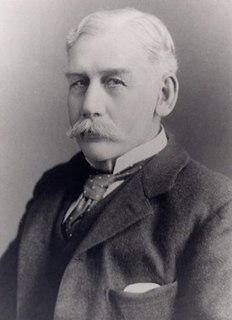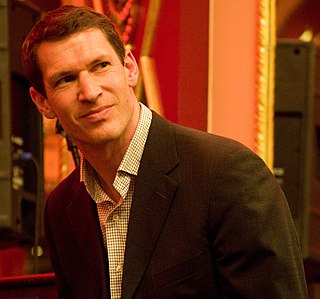
Curtin University, formerly known as Curtin University of Technology and Western Australian Institute of Technology (WAIT), is an Australian public research university based in Bentley, Perth, Western Australia. It is named after John Curtin, Prime Minister of Australia from 1941 to 1945, and is the largest university in Western Australia, with 59,939 students in 2021.
The Miles Franklin Literary Award is an annual literary prize awarded to "a novel which is of the highest literary merit and presents Australian life in any of its phases". The award was set up according to the will of Miles Franklin (1879–My Brilliant Career (1901). She bequeathed her estate to fund this award. As of 2016, the award is valued A$60,000.

Cloudstreet is a novel by Australian writer Tim Winton published in 1991. It chronicles the lives of two working-class families, the Pickles and the Lambs, who come to live together in a large house called Cloudstreet in Perth over a period of twenty years, 1943 to 1963. The novel received several awards, including a Miles Franklin Award in 1992, and has been adapted into various forms, including a stage play and a television miniseries.

Richard Lydekker was an English naturalist, geologist and writer of numerous books on natural history.

Timothy John Winton is an Australian writer. He has written novels, children's books, non-fiction books, and short stories. In 1997, he was named a Living Treasure by the National Trust of Australia, and has won the Miles Franklin Award four times.
Richard Billingham is an English photographer and artist, film maker and art teacher. His work has mostly concerned his family, the place he grew up in the West Midlands, but also landscapes elsewhere.

Art Wolfe is an American photographer and conservationist, best known for color images of landscapes, wildlife, and native cultures. His photographs document scenes from every continent and hundreds of locations, and have been noted by environmental advocacy groups for their "stunning" visual impact.
Fremantle Press is an independent publisher in Western Australia. Fremantle Press was established by the Fremantle Arts Centre in 1976. It focuses on publishing Western Australian writers and writing.

Blueback is a short novel by the Australian author Tim Winton. First published in 1997, it has been translated into Italian, Dutch and Japanese. It is subtitled a fable for all ages'.
David Moore was an Australian photojournalist, historian of Australian photography, and initiator of the Australian Centre for Photography.

Richard Leo Woldendorp OAM,, is a Dutch-Australian photographer known for his aerial photography of Australian geography.

Jesse (1988) is a children's picture book written by Australian author Tim Winton and illustrated by Maureen Prichard. It is the story of a small boy exploring the wild countryside beyond his garden gate - all alone.

Timothy Alistair Telemachus Hetherington was a British photojournalist. He produced books, films and other work that "ranged from multi-screen installations, to fly-poster exhibitions, to handheld device downloads" and was a regular contributor to Vanity Fair.
The Department of Culture and the Arts was part of the Government of Western Australia.
Mark Strizic was a 20th-century German-born Australian photographer, teacher of photography, and artist. Best known for his architectural and industrial photography, he was also a portraitist of significant Australians, and fine art photographer and painter known for his multimedia mural work.
Bruce Pascoe is an Aboriginal Australian writer of literary fiction, non-fiction, poetry, essays and children's literature. As well as his own name, Pascoe has written under the pen names Murray Gray and Leopold Glass. Since August 2020, he has been Enterprise Professor in Indigenous Agriculture at the University of Melbourne.

David Yarrow is a British fine-art photographer, conservationist and author. The subjects of his photography include sport stars, world-renowned models, wildlife, indigenous communities and landscapes. He has collaborated with super models Cara Delevingne and Cindy Crawford. Since 2018, David’s work has raised over $11m for philanthropic and conservation organisations. In 2021, his collaboration with Cindy Crawford raised over $3m for the American Family Children’s Hospital. He is also known for his staged narrative series capturing the American Wild West. He currently lives in London.

John Chester Cato was an Australian photographer and teacher. Cato started his career as a commercial photographer and later moved towards fine art photography and education. Cato spent most of his life in Melbourne, Australia.
David Tatnall is a Melbourne photographer, known for his representation of the natural landscape. Tatnall began his career as an artistic photographer in 1975. He works with both large format and pinhole camera techniques. His work is in the same tradition as Peter Dombrovskis and Olegas Truchanas - in the past, Tatnall has worked with Dombrovskis.
"I tend to go with no preconceived idea of what I'm going to photograph, other than I'm going to this particular location and I'll see what's there. I go mainly to experience the location, to experience the wilderness area, to actually go there on a walking trip and I take my camera. If I see things to make photographs, I'll stop and make photographs."
Philip Quirk is an Australian photographer, photojournalist and educationist, known for his specialist imagery of landscape, geographic and documentary photography, and as a founding member of the Wildlight agency.











